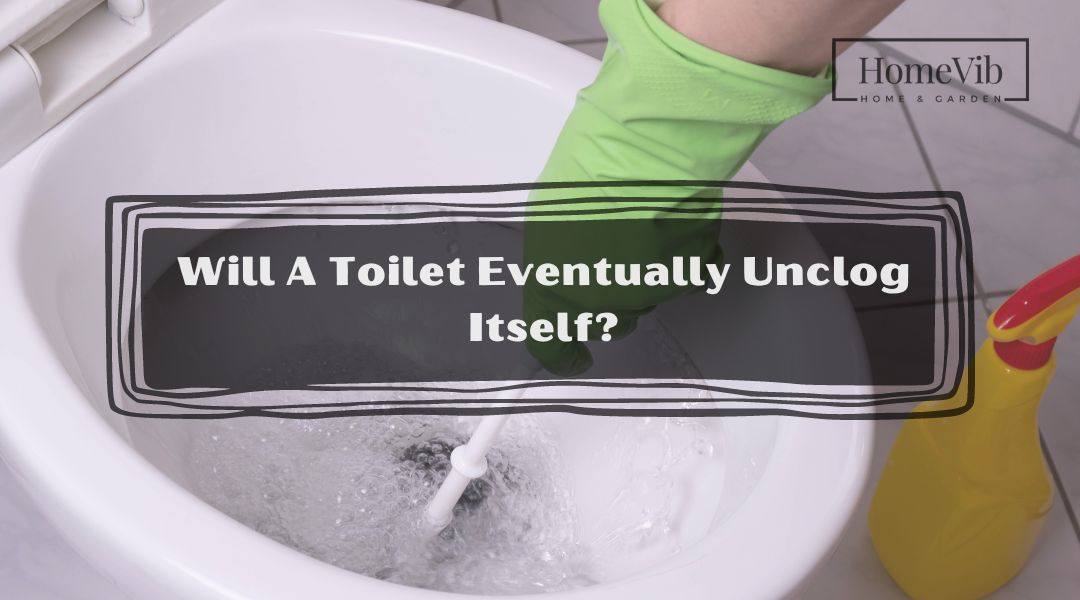No, a toilet will not unclog itself without some form of intervention.
Dealing with a toilet clog can be a frustrating and inconvenient experience that you might be tempted to wait it out, hoping the clog will disappear without intervention.
In this article, we will know the reasons behind toilet clogs, explore practical methods for unclogging toilets, and provide essential tips for prevention and maintenance.
Prepare to gain valuable insights that save you time, frustration, and potentially costly repairs.
Will a Toilet Unclog Itself?
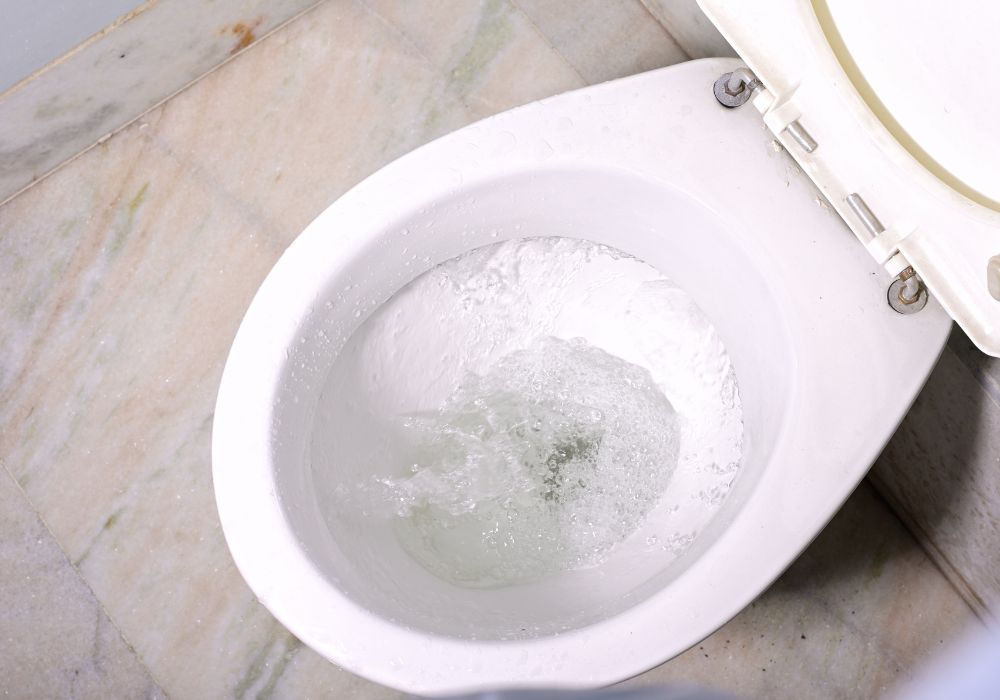
Toilet clogs are a common household nuisance that can disrupt our daily routines and cause frustration. When faced with a clogged toilet, it’s natural to wonder if the problem will resolve over time.
Gravity and water pressure alone are generally insufficient to dislodge stubborn clogs. Patience and waiting for the clog to disappear can often result in further complications or damage to the plumbing system.
Understanding the reasons behind toilet clogs is crucial to comprehend why they cannot unclog themselves.
Various factors contribute to toilet blockages, including excessive toilet paper usage, flushing foreign objects, or the accumulation of debris over time.
These obstructions restrict the water flow and prevent it from effectively flushing down the drain.
Educating household members about proper toilet usage can help avoid accidental blockages.
What Is the Best Tool To Unclog a Toilet?

A plunger is a simple yet effective tool that can work wonders in dislodging toilet clogs. It consists of a rubber cup attached to a handle.
When pressed against the drain opening, the rubber cup creates suction, allowing you to apply downward and upward pressure to dislodge the blockage.
Plungers are explicitly designed for toilet clogs and have a high success rate in resolving them.
The plunger’s suction helps break up the clog and allows water to flow freely, restoring regular flushing.
They are an affordable and practical investment for any household. Plungers can also be used for sinks, showers, and other drain openings in the house.
While there are various plungers, a traditional cup plunger is the most suitable for toilets.
How Do You Unclog a Toilet When a Plunger Doesn’t Work?
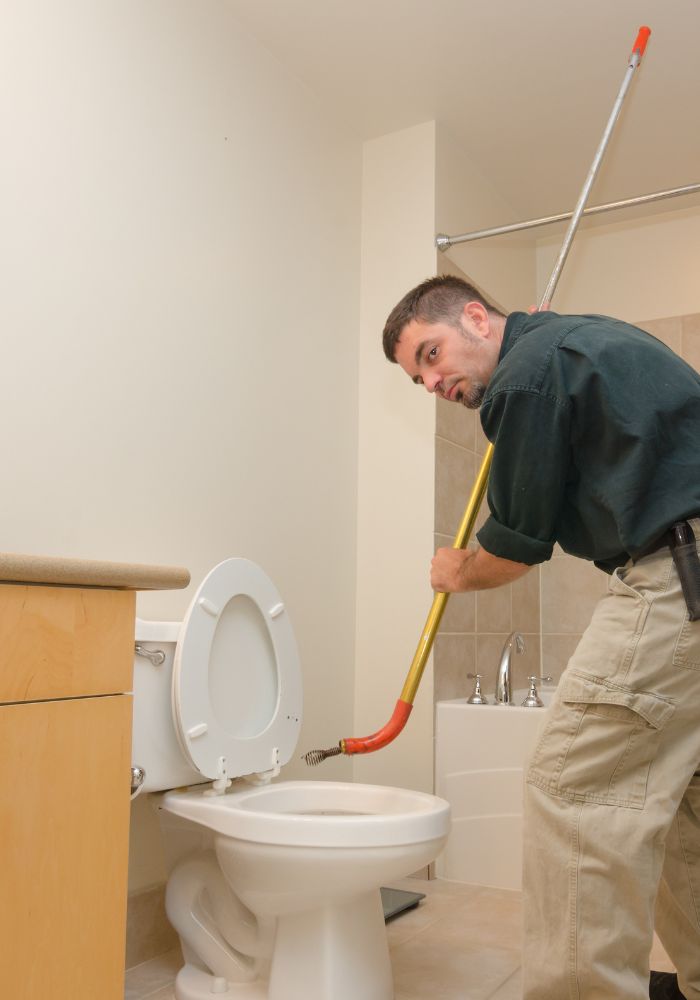
While a plunger is usually the go-to tool for unclogging a toilet, there may be instances where it doesn’t quite do the trick.
If you find yourself in a situation where a plunger doesn’t work, you can try these few alternative methods to tackle the stubborn clog.
1. Toilet Auger (Plumber’s Snake)
Example of Toilet Auger (Buy From Amazon)
A toilet auger is a long, flexible tool designed for unclogging toilets. Insert the auger into the toilet bowl, rotating the handle clockwise while applying gentle pressure.
This action helps to break up or dislodge the clog. Carefully retract the drill, and repeat the process as needed.
Remember to follow the manufacturer’s instructions and exercise caution to avoid damaging the toilet.
2. Wet/Dry Vacuum
You can remove the clog by accessing a damp/dry vacuum. Ensure the vacuum is set to the appropriate mode for liquids.
Create a tight seal around the toilet drain with the vacuum hose, and apply suction to remove the obstruction. Exercise caution to prevent any splashing or damage to the vacuum.
3. Call a Professional Plumber
If all else fails or you’re uncomfortable attempting other unclogging methods, it’s best to contact a professional plumber.
They have the expertise and specialized tools to handle stubborn clogs effectively and safely.
What Can You Pour Down a Toilet To Unclog It?
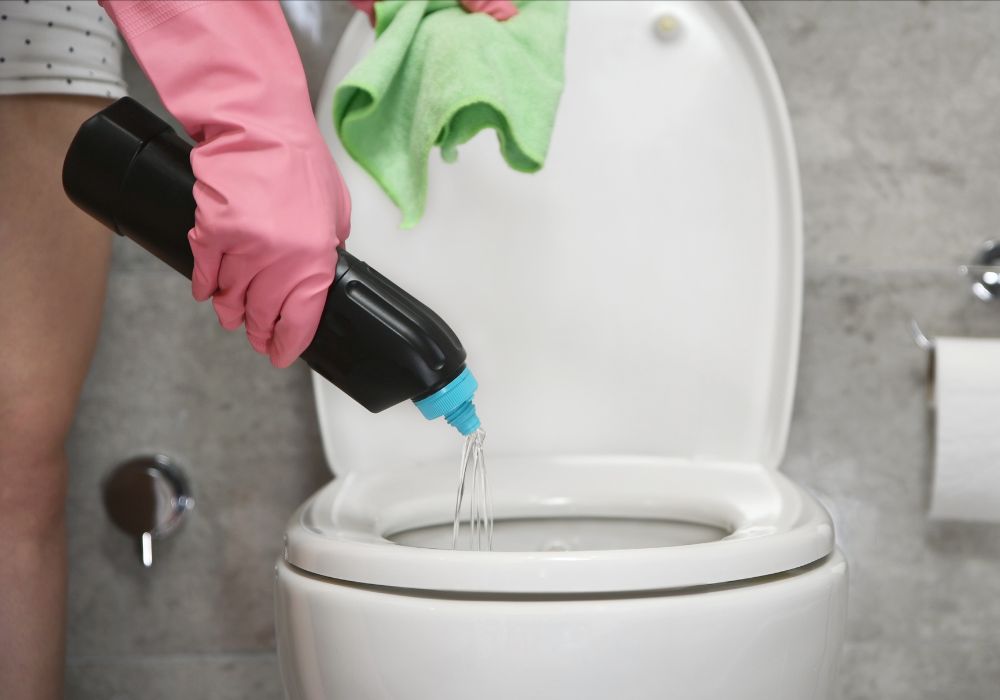
Dealing with a clogged toilet can be a frustrating and inconvenient situation. However, before reaching for a plunger or calling a plumber, there are several household items you can try to unclog the toilet yourself.
This guide will explore effective methods and substances to help you tackle a clogged toilet. While a few options are available, exercising caution and using them properly is essential.
Here are some substances you can try pouring down a toilet to unclog it:
Hot Water
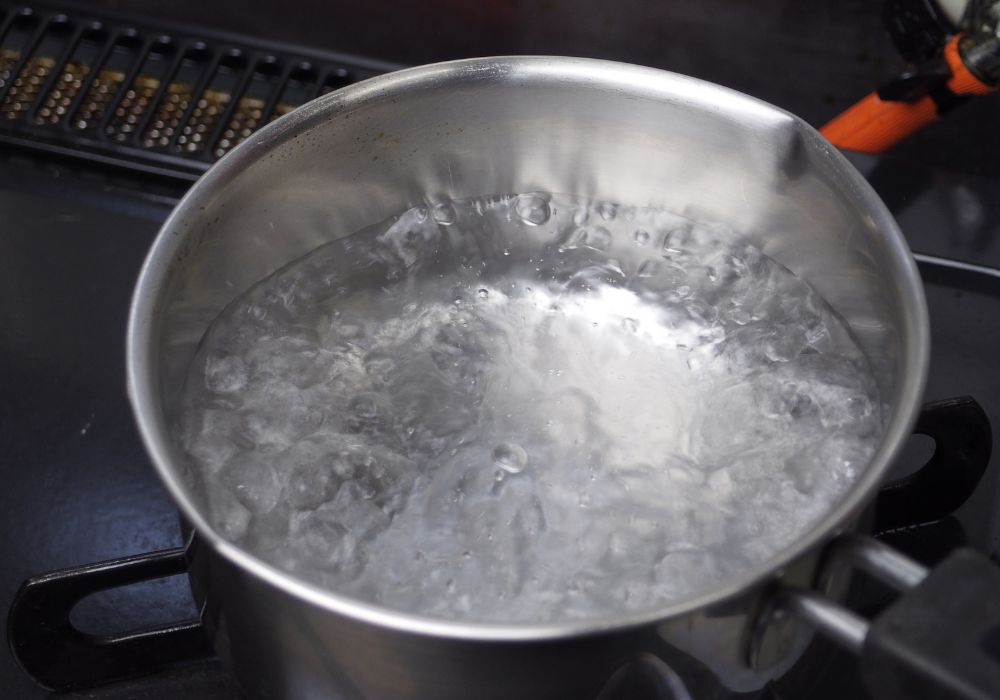
Hot water is a simple yet effective solution to unclog a toilet. Start by heating a pot of water on the stove or using hot tap water.
The hot water helps to break down and dislodge the clog, particularly if it’s caused by organic matter or a buildup of toilet paper. Carefully pour the hot water into the toilet bowl, ensuring it doesn’t overflow.
Let the hot water sit in the bowl for a few minutes to soften the clog. Then, try flushing the toilet to see if the clog has been cleared.
Repeat the process if necessary. Remember to exercise caution while handling hot water to avoid burns.
Dish Soap
Dish soap is another household item that can rescue when dealing with a clogged toilet. Its lubricating properties help to loosen and break down the clog, making it easier to flush away.
Start by squirting a generous amount of dish soap into the toilet bowl. Allow the soap to sit for a few minutes to penetrate the clog.
Then, pour hot water into the bowl (not boiling) to further assist in breaking down the obstruction. Gently plunge the toilet to create agitation and help dislodge the clog.
Flush the toilet to check if the clog has been resolved. Repeat the process if needed.
Baking Soda and Vinegar
Heinz All Natural Distilled White Vinegar from Amazon
Baking soda and vinegar create a natural chemical reaction that can help break down inevitable clogs.
Start by pouring one cup of baking soda into the toilet bowl, followed by two cups of vinegar. Allow the mixture to fizz and work its way through the clog.
Let it sit for some time before flushing the toilet.
Enzyme-Based Cleaners
Multi-Purpose Enzyme Cleaner from Amazon
Enzyme-based cleaners are specifically formulated to break down organic waste and can be effective for inevitable clogs.
Follow the cleaner’s packaging instructions, as different products may have varying application methods.
Typically, you pour the cleaner into the toilet bowl, allowing it to sit for the recommended time. Flush the toilet afterward to check if the clog has cleared.
What Is the Strongest Thing To Unclog a Toilet?
A toilet auger is a specialized tool designed specifically for tackling tough clogs in toilets. It consists of a long, flexible cable with a handle on one end and a spiral or barbed tip on the other.
The long cable of a toilet auger allows it to reach deep into the plumbing system, reaching clogs that may be out of reach for other tools.
It can navigate through the curves of the toilet trap and penetrate through the blockage.
A toilet auger’s coiled or barbed tip is designed to grab onto or break up the clog, allowing you to pull it out or through the drain.
This makes it highly effective for dislodging stubborn and hard-to-reach clogs.
Toilet augers can handle many clogs, including solid waste, toilet paper, and other debris. They can also clear clogs in other parts of the plumbing system, such as sinks or tubs.
What Is the Best Plunger To Use To Unclog a Toilet?
The best plunger for the job is a toilet plunger, a flange plunger, or a ball plunger. Its unique design and functionality are specifically suited to unclog toilets effectively.
A toilet plunger features a rubber cup with an extended flange or sleeve at the bottom. The flange is designed to fit snugly into the toilet drain opening, creating a tight seal.
This seal is crucial for generating the suction and pressure to dislodge the clog.
The rubber cup of a toilet plunger is flexible and can compress and expand quickly.
This flexibility enables the plunger to create a strong suction force when pushed and pulled, effectively dislodging the clog.
The flange helps maintain the seal and prevents air from escaping, maximizing the suction power.
Toilets have a unique shape with an S-shaped trap, making it essential to have a plunger that can fit and work effectively in this configuration.
The flange design of a toilet plunger allows it to adapt to the toilet trap, ensuring optimal contact and pressure during plunging.
Does Pouring Boiling Water Down a Toilet Unclog It?
Boiling water can help clear inevitable clogs, particularly those caused by organic materials like toilet paper or waste. The hot water can soften and break down the clog, making it easier to flush away.
Taking safety precautions is crucial before pouring boiling water into the toilet. Always handle boiling water with care to prevent burns or scalding.
Make sure to wear protective gloves and use a heat-resistant container for pouring.
Hot water helps break down the obstruction and clear the blockage. Once you’ve given the boiling water some time to work, cautiously attempt to flush the toilet.
If the water level starts to subside and the clog appears to be clearing, continue flushing to remove any remaining debris.
It’s important to note that while boiling water can be adequate for certain types of clogs, it may not work in all situations.
Boiling water is not recommended for clogs caused by non-organic materials or considerable obstructions.
In such cases, it’s advisable to try alternative methods like using a plunger, a toilet auger, or seeking professional plumbing assistance.
Can I Use a Snake To Unclog a Toilet?
If you’ve encountered a stubborn toilet clog that a plunger couldn’t tackle, you might wonder if using a snake, also known as a plumber’s snake or toilet auger, is a viable option.
Snakes are versatile tools commonly used by professional plumbers to unclog drains, including toilets.
What Kind Of Snake Will Unclog a Toilet?
The snake you need is called a toilet auger or a closet auger. This specialized tool is designed to navigate the toilet trap and effectively clear clogs.
A toilet auger consists of a long, flexible cable with a handle on one end and a bent or bulbous tip on the other. The bent or bulbous tip is designed to fit into the toilet drain without damaging the porcelain.
Toilet augers typically have about three to six feet long, allowing them to reach deep into the toilet’s drainpipe.
The flexible cable can maneuver through the curves of the toilet trap, enabling you to reach and dislodge the clog.
The design of a toilet auger ensures that it won’t scratch or crack the porcelain of the toilet bowl. The protective sleeve or rubber coating around the cable helps minimize the risk of any potential damage.
While a toilet auger is ideal for unclogging toilets, you may encounter other types of snakes, such as handheld drain augers or motorized drain snakes.
These snakes are better suited for clearing clogs in larger drainpipes or sewer lines than toilets.
For instance, a handheld drain auger, also known as a drum auger, is a versatile snake that can handle a variety of drain clogs.
However, due to its longer length and less specialized design, it may not be as effective in maneuvering through the toilet’s trap as a toilet auger would be.
Therefore, a toilet auger is recommended for optimal results when unclogging a toilet.

